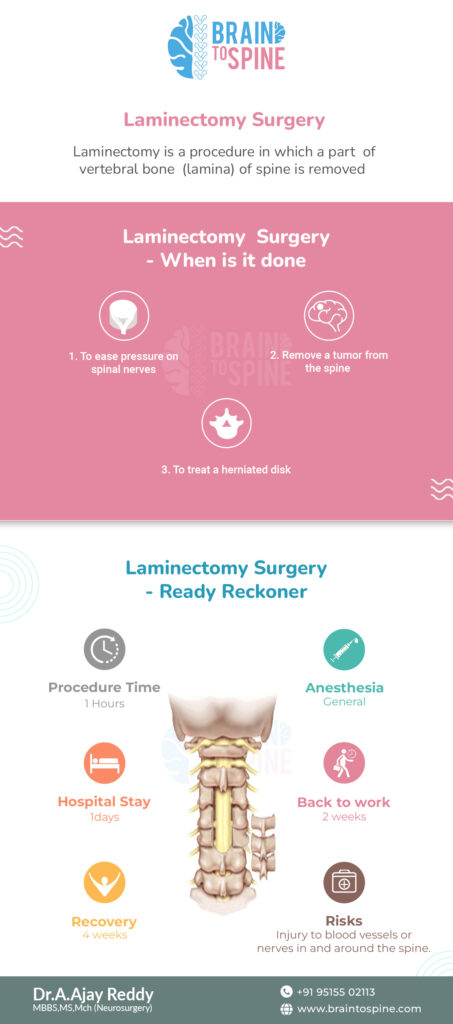

FAQs
In most circumstances, laminectomy is chosen when the patient’s everyday life is being disrupted by spinal difficulties. Laminectomy is a procedure that is performed to treat spinal stenosis. In the event of spinal stenosis, the spinal column narrows, putting pressure on the spinal cord and nerve roots. Spinal stenosis is caused by contracting spine discs, spine arthritis, genetic malformations, bone and ligament swelling, achondroplasia (dwarfism), spinal tumour, slipping disc, and traumatic injury.
Laminectomies are a relatively safe and routine procedure. This procedure improves painful and neurological symptoms significantly. However, it’s possible that some patients won’t know how well they’ve recovered until at least 6 weeks following the treatment. It might take months for some nerve problems to go away completely. Leg discomfort caused by spinal stenosis is usually relieved with lumbar laminectomy.
Although a laminectomy can be painful, using medicines can help alleviate the discomfort. After surgery, patients should expect to experience discomfort, stiffness, and soreness. Following the treatment, the surgeon will prescribe pain relievers for the back or the incision site.
A brief hospital stay may be required after a lumbar laminectomy, however some patients may be able to return home the same day. Patients may require assistance going around the house for a few days post surgery, depending on the degree of the treatment and whether a spinal fusion was also required.
After spinal laminectomy surgery, complete recovery might take anything from few days to weeks. Your recuperation time will be extended if you are also having a spinal fusion. Patients may need to avoid vigorous tasks including stooping, bending, or lifting heavy for two to three months, depending on the surgery. Physical therapy and modest exercise, such as walking, may be recommended by a patient’s doctor throughout their recovery period to enhance the strength and mobility of the muscles in the surrounding region.
